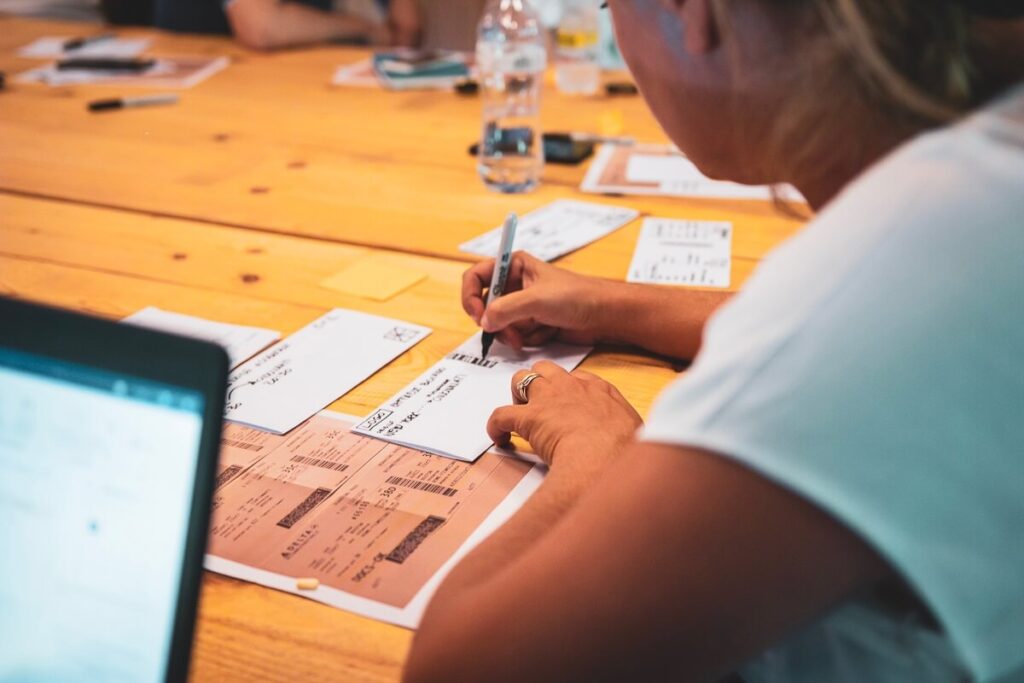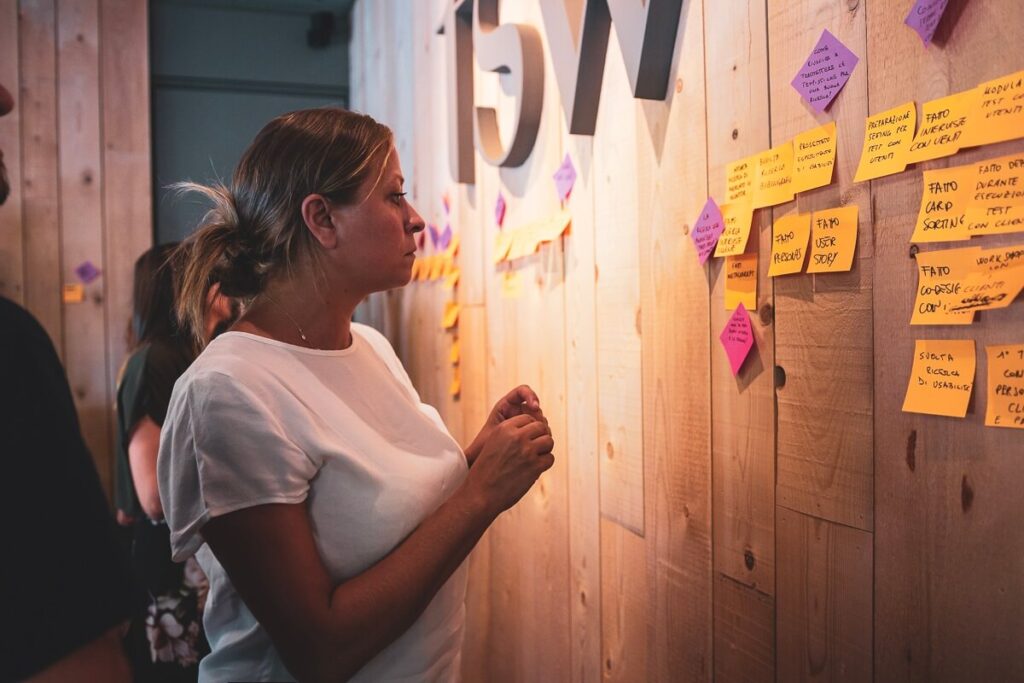We will never tire of saying it: involving people in all phases of design is essential to creating quality experiences and will be the indispensable element for the survival of companies. Yes, it may sound drastic, but it is reality. Those who continue to design products or services without directly involving their customers will be replaced by those who truly care about people’s well-being.
Because this is what it is all about, “well-being”, feeling good, at any time of the day, from when you use the coffee machine in the morning, to the scrolling websites in the afternoon, and taking out some cash at the ATM before dinner. Any experience can be average, bad, or excellent. And, not surprisingly, it is pleasant, enjoyable and easy to live situations that will prevail over the others.
On the other hand, who would not want to live in a stress-free world, where the quality of experiences is always the best possible? This is the world we want to contribute to creating. To do this, we work together with people each and every day, applying skills and methodologies combined with technology, and a generous serving of passion.
Co-design is also one of the methodologies that best embody this innovative and ancient way of doing things. Let’s see what it is and how it brings value to our projects.
What is co-design?
Codesign is a participatory design methodology. It emerged around the 60s in the northern Europe and later acquired fame when IDEO rigorously described the process through design thinking. It is important to emphasize that this is an activity done with people, but not always for people.
It has also been defined as an activity that combines the multiple visions and backgrounds of different people to solve the same problem (Scrivener – 2008), and is an activity that satisfies the need for collaborative and productive meetings between various stakeholders (Albisson, Lind and Forgren – 2008).
We like to say that co-design creates a unique design context, in which all the participants become designers and in which, thanks to the leadership of the designer-facilitator who has the task of translating and interpreting, people are transformed into pencils and design projects that truly respond to their needs.

What is co-design for?
Participatory design activities help designers understand and integrate end users’ point of view in the design of products and services by gathering people’s needs and expectations. These activities are also particularly useful to validate the choices made during the concepting phase.
For us at TSW, applying co-design to projects means creating unique moments of reconnection between two planets that unfortunately communicate very little: the ‘Company planet’ and the ‘Customer planet’. Through this methodology, in fact, we involve people – the customers of our customers – to gather their opinions and include all their points of view in the design of the products and services that they will use.
To do this, we help companies really “listen” to these often unexpressed needs, interpreting them and translating them into precious data and information, with the aim of creating experiences that are enjoyable to live.
The role of the designer
Precisely for this reason, the role of the designer takes on a completely different form and value for us. Going beyond a mere illustrator, the designer becomes, a translator, a listener, an expert who puts themselves at the service of the end customer.
During participatory design, people are consequently co-designers and designers support them by trying to bring out their creativity through visualization, frameworks, and synthesis.
An important aspect of co-design is the ability to not only support groups through this exciting process, but also being able to guide them and bring them back on track when the discussion becomes unrelated to the goal at hand.
The role of people
People (who are often defined as users, but are actually much more) as we explained, become real designers. They are at the centre of the design, with their ideas, their needs, their desires, but also with their limits. Limits that a good designer will have to make up for, trying to correctly interpret all the proposed stimuli and translating them into possible solutions agreed upon by all participants.
People must be made to feel at ease, regardless of the proposed activity, and be made to feel that they are free to indulge in and share any divergent thought. All before being attentively led through the convergent phase to summarize everything that has emerged.
Co-design: how is it done?
In TSW co-design does not simply mean “workshop”. Often the term “co-design” is abused and used to disguise and give (apparent) value to activities of another nature. Instead, co-design goes beyond workshops and embraces any activity that involves the presence of users.

This is why we consider participatory design not only workshops, which we love to do anyway, but also usability tests, interviews, surveys, and more. It is a question of approach.
Imagine that the manager of a SEO department proposes that you do some co-design activities. Surely you would be surprised, but that’s exactly what we do.
Why should SEO have information directly from users? Simply because they have to know who those people are, why they are looking for certain things, and how they would like to interact with them in order to create the best possible search experience.
Together with people: our approach
Codesign is indeed a methodology, but for us it is above all a way of doing things. It means working for people, but above all with people, because we have experienced first-hand the extraordinary nature of experiences that have been designed by those pencils we talked about a few lines ago. …They are the best designers in the world, your customers.